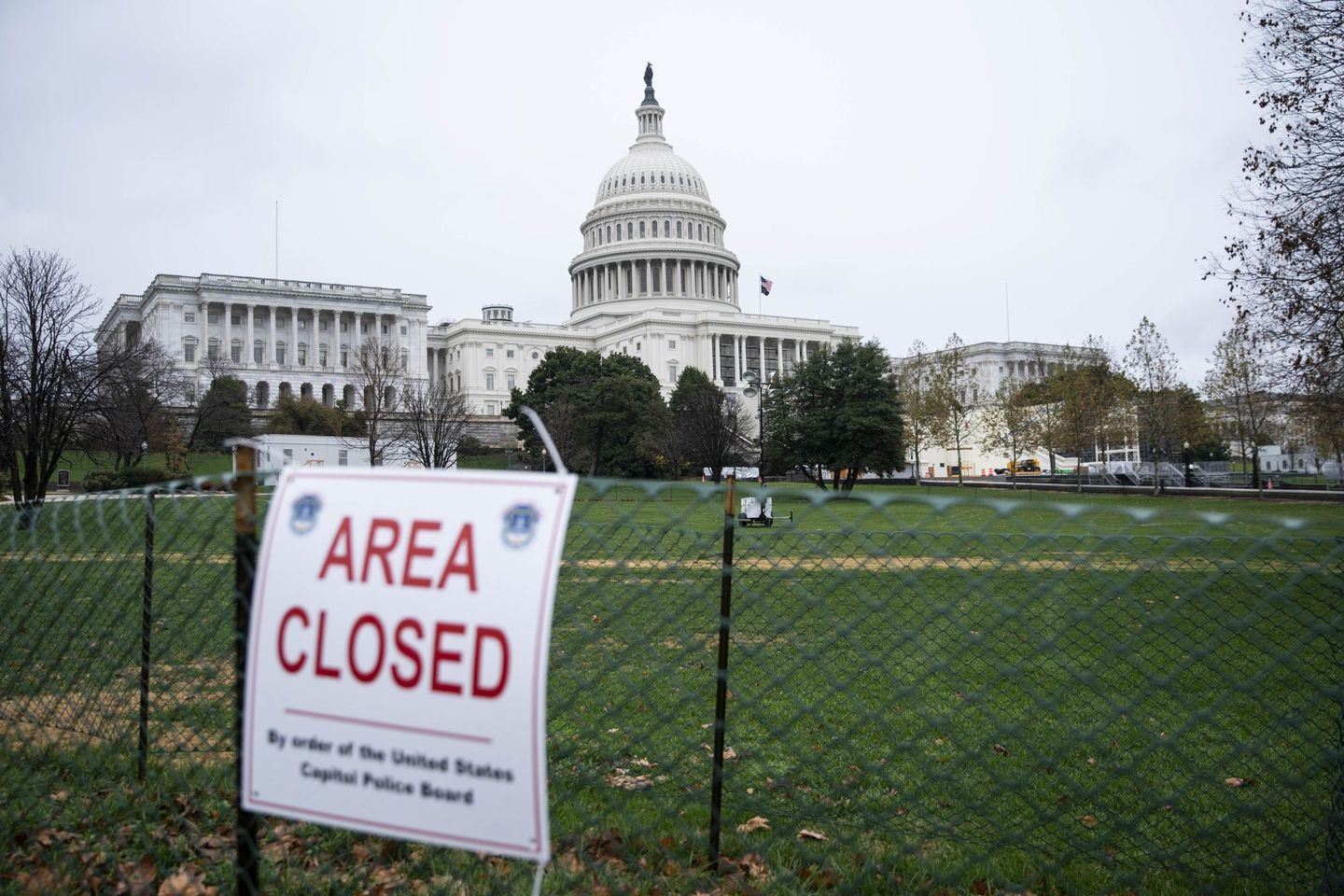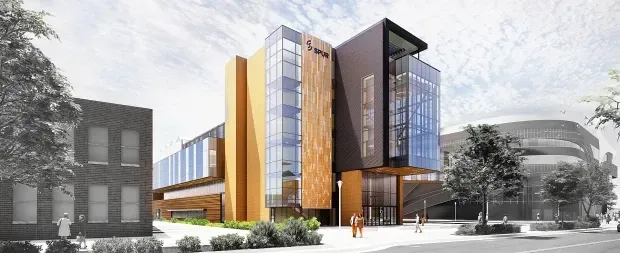A federal perspective on public policy from our desk in Washington provided by Thomas Phillips, Congressional Affairs Specialist at Battelle.
STEMx's View from DC: STEM and the new administration
Q: Before we look ahead to 2021 with a new Congress and Administration, what were the most essential policy moments for STEM education in 2020?
A: Because of the pandemic, Congress spent more time on relief and spending issues than on new STEM policy in 2020. Notably, the CARES Act, which passed back in the spring, established a new “Education Stabilization Fund.”
Fortunately, the Omnibus bill which passed at the end of 2020, and finalized spending for Fiscal Year 2021, also extended the date by which state and local governments must spend the dollars in that fund until December 31st, 2021. It also injected an additional $82 Billion into that fund to be allocated as follows:
- $4.1 billion for the Governors Emergency Education Relief (GEER) Fund;
- $54.3 billion for the Elementary and Secondary School Emergency Relief (ESSER) Fund; and
- $22.7 billion for the Higher Education Emergency Relief (HEER) Fund;
- $819 million for the Bureau of Indian Education and outlying areas.
Additionally, funding for Career and Technical Education (CTE) saw an increase for the fourth straight year, with an additional $52.25 Million being added for the Perkins Basic State Grants, for an overall total of $1.334 Billion for CTE broadly.
The one policy-oriented legislative victory of note was the passage of the bipartisan Rural STEM Education Act (H.R. 4979) by the House of Representatives in September. Originally introduced in 2019, at the end the first year of the 116th Congress, it achieved broad bipartisan support – enough to be passed out of the House. In a regular year, it likely would have seen passage by the Senate, but 2020 was anything but regular. The bill’s sponsors are confident that upon reintroduction in the 117th Congress, it will receive the same level of support and, this time, make it to the President’s desk.
Q: Last week was the Georgia Senate Runoff. Can you explain what the results mean for day-to-day operations of the Senate, and comment on broader implications for Congressional action in 2021?
A: This is a fairly unique scenario for the Senate. The runoff resulted in two seats “flipping” from Republican to Democratic control, causing a 50-50 split, and neither party having an outright majority—without the Vice President’s tiebreaking vote. The last time this happened was in 2001, with Senators Trent Lott (R-MS) and Tom Daschle (D-SD) sharing resources and control. Even though Lott had the majority with the Vice President’s vote, he allowed equal numbers of Democrats and Republicans to sit on committees, instead of granting his “majority” party more seats, as is allowed. Although all of their decisions were not necessarily popular, their cooperation and collaboration allowed the Senate to pass significant legislation.
It should be noted that while the precedent of Lott and Daschle’s power-sharing agreement exists, it is not in any way binding. To avoid partisan gridlock, our current Senate Leaders, Mitch McConnell and Chuck Schumer, will need clear and open lines of communication as well as mutual respect for party differences to achieve the needed 60-vote threshold to pass issues of importance in “regular order.”
The other option on the table, and one that is being discussed by Democrats, is that of “reconciliation,” which leverages budget legislation as a vehicle for certain policy priorities, and which only requires 50 votes to pass (subject to certain restraints). Such reconciliation packages are what Senate Republicans used to attempt Healthcare reform in 2017 (which failed) and tax reform in 2018 (which passed).
Each fiscal year typically presents one opportunity for such a package, so we can expect two, (perhaps three) reconciliation bills before the end of the 117th Congress in 2022. The priorities currently being discussed by Senate Democrats for such packages are broad and likely to be combined into “omnibus” reconciliation bills including issues such as additional stimulus, tax reform, infrastructure, energy, and climate change.
Q: We're just days away from Joe Biden's inauguration as President. Beyond the ceremony, what happens next week?
A: Well, for one thing, the ceremony itself is going to look significantly different than it has in years past; this is partially due to the ongoing pandemic, but also because of the recent attack on the Capitol, and credible threats to disrupt the process.
That stated, on Inauguration day, President Biden's transition team will hand off their work to an initial set of administration appointees within federal agencies. These early appointees will be political and not require confirmation by the Senate. All Cabinet secretaries and their assistants will require Senate confirmation. Immediate priorities for the Biden Administration will be to confirm the Secretaries of Defense, Homeland Security, Treasury, and State and those nomination hearings are already scheduled for next week. In the meantime, the President will be able to nominate “acting” heads of those agencies, and a member of his transition team said that he will be relying on senior career officials to temporarily lead most agencies while awaiting confirmation of his picks.
We can expect to see a more detailed plan for the first 100 days of the administration, and some specific actions outlined around the four priorities he laid out shortly after the election: COVID-19, Economic Recovery, Racial Equality, and Climate Change. Quick action on these priorities, as well as a few “Day One” executive orders will set the tone of his administration for the next four years. He has said that many of those orders are to scale back or entirely reverse certain policies of the Trump Administration. What remains to be seen is how he plans to temper such large-scale policy shifts with his calls for national unity, as many Republicans will balk at such orders as executive overreach.
Finally, and most notably, after the inauguration of President Biden and Vice President Harris, the Vice President will officially be named the President of the Senate and can serve as the tiebreaker to vote Senator Chuck Schumer to be the Senate Majority Leader. As I mentioned above, Senators Schumer and McConnell are still working out their plan for sharing power in a 50-50 Senate, but beginning next week, Senator Schumer will have the title and powers of the Majority Leader.
Q: What do we know about the Biden administration’s plans for STEM education?
A: At the moment, we have little details about the administration’s STEM plan. However, we have more knowledge about their broader plan for education, and know who Biden’s nominee for Secretary of Education will be – Dr. Miguel Cardona, Connecticut’s education commissioner. We also have seen his recently proposed COVID-19 stimulus package, which includes robust education funding. With this information, we can outline a few expectations, as well as infer some other likely policies based on the administration’s broader priorities.
In the education space, we know that administration plans to leverage Federal resources to scale-up successful state and local initiatives, as well as bolster investments in human capital. We also know that diversity, specifically in the STEM pipeline and in higher education, is high on their priority list. As a result, we can expect to see incentives for innovative practices in these areas, as well as resources from the Department of Education directed toward evidence-based research that supports such strategies.
Regarding the nomination of Dr. Cardona to head up the Department of Education, we can look at his work in Connecticut to get a better understanding of how he will lead the agency. To begin with, he has experience as an educator and an administrator, having served as a fourth-grade teacher, principal, assistant superintendent, and commissioner. In addition to his first-hand experience from the classroom, he has his masters in bilingual/bicultural education, and his doctorate in education from the University of Connecticut, which is to say he brings a wealth of knowledge to the role.
In response to the COVID-19 pandemic, Dr. Cardona’s leadership as commissioner made Connecticut the first state in the nation to ensure every public-school student had a laptop and high-speed internet connection to engage in remote learning. We can be hopeful that as Secretary of Education, he will make bold plans to ensure such opportunity and access for students across America.
Finally, President-elect Biden released the details for his proposed COVID-19 stimulus package late last week. It’s $1.9 Trillion – more than double the amount in the bipartisan package from December, and only slightly less than the CARES Act. The education provisions in the package place an emphasis on getting back to school safely, allocating $130 Billion to K-12 schools for measures that help with reopening. These funds can be used to pay for “virus mitigation efforts” including improved building ventilation or purchasing personal protective equipment (PPE). Additionally, the money could be spent on equipment and materials to facilitate remote learning.
Q: Do any of these priorities overlap with existing priorities of the new Congress?
A: Because there will be a “unified” government, with Democratic leadership of the executive branch and both chambers of Congress, there will be significant overlap in what the administration sets out to accomplish, and what policies Congress is able to pass into law. A lot of this alignment will come when looking at budget priorities, and the appropriations bills that Congress eventually passes. We can expect to see significant outlays in the domestic policy space, with boons for education and workforce funding, as part of the administration’s economic recovery plans.
It is also important to note that this will be the first year that Congressional spending is not limited by the self-imposed sequestration and budget caps that have been in place since 2013. This should allow the administration and Congress to be a bit bolder in establishing their funding priorities, and to find areas of common ground.
Q: Any advice for STEM education advocates during this first 100 days?
A: Right now, Battelle and the STEMx network are building relationships with incoming members of the new administration and Congress, letting them know of our deep roster of diverse STEM leaders who can help inform large-scale policy efforts, such as the Federal STEM strategic plan we helped to inform with OSTP. Below are my top three suggestions for STEM advocates to kick of 2021:
- At the start of a new term, advocates should become familiar with the priorities being set by the administration and identify areas of alignment within their own efforts. Nearly all of the work being done by STEMx is at the state level, and new appointees and staff will be looking for scalable solutions to the biggest challenges.
- Communication with incoming officials is key, but stakeholders should be careful not to overwhelm them with early requests. Instead, advocates should focus on providing relevant and useful information backed up with data and results.
- One opportunity to submit such proposals is through the Day One Project, an initiative of the Federation of American Scientists. While not formally connected to the administration, most members of their team are former S&T officials with the know-who and know-how to move policy forward. If you’re interested in submitting a proposal memo, the Day One Project will be accepting them through the first 100 days of the administration. Their template is a useful one to follow and hold onto, even if you choose not to submit this time around.
- To that end, it is important to be recognized as a trusted resource for the broader community. The more advocates focus solely on their own needs, the less effective they will be. Successful advocates cast a wide net, generating support and coalescing with diverse partners to achieve the greatest good.
If you have any questions about policy or advocacy, please don't hesitate to reach out to me via email or phone.





